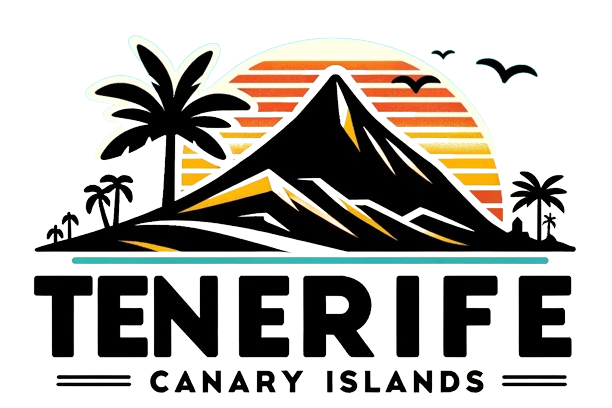The Masonic Temple of Santa Cruz de Tenerife, a neo-Egyptian architectural enigma on Calle San Lucas, has risen from decades of silence to reclaim its place as Spain’s sole surviving Masonic temple. Reopened on October 27, 2025, after a €3 million restoration, this early 20th-century icon—once a hub for intellectual discourse and ritual—now beckons as a Masonic Interpretation Centre. Amid palm-like columns, sphinx guardians, and the watchful all-seeing eye, it whispers tales of Freemasonry’s golden age in the Canary Islands, its Franco-era suppression, and a triumphant revival symbolizing democratic memory. For history aficionados, architecture lovers, or curious travelers in Tenerife, this guide decodes its symbols, storied past, and how to step inside a building that blends ancient mysticism with modern heritage.
Echoes of Enlightenment: The Founding and Rise of the Añaza Lodge
The seeds of the Masonic Temple were sown in 1895 with the founding of the Añaza Lodge, the most influential Masonic workshop in the Canary Islands during the early 20th century. Named after a Guanche mencey (king) from Tenerife’s indigenous lore, Añaza quickly became a nexus for progressive thinkers, educators, and elites, fostering values of liberty, equality, and laic education amid Spain’s turbulent Restoration era. By 1899, the lodge’s ambition crystallized: A dedicated temple to host rituals, lectures, and the iconic ¡Luz! magazine (launched 1931, revived in 2025 with Canary Parliament support).
Financed through member contributions, the project embodied Freemasonry’s aspirational ethos—transforming esoteric ideals into stone. Affiliated with the Gran Oriente Español and later the Gran Logia de España, Añaza’s temple symbolized Tenerife’s intellectual awakening, drawing parallels to global Masonic centers in London and Washington. Until 1936, it pulsed with activity: Initiation ceremonies in subterranean grottos, philosophical debates in grand halls, and cultural exchanges that influenced Canary society’s push for secular reforms.
Architectural Splendor: Neo-Egyptian Symbols and Esoteric Design
Designed by local architect Manuel de Cámara y Cruz and completed in 1904 (with facade finalized by 1923), the temple masterfully fuses Masonic symbolism with Egyptian revivalism—the only such structure in Europe. Its facade, a visual manifesto, features:
- Palm-like Columns: Evoking Solomon’s Temple, rising heavenward to signify spiritual ascent.
- Sphinx Statues: Guardians of wisdom, flanking the entrance with riddles of enlightenment.
- All-Seeing Eye: In the pediment, a nod to divine providence and omniscience, gazing over Calle San Lucas.
Inside, the 1,500 m² layout unfolds like a ritual journey: The subterranean Grotto of Reflection—carved into volcanic rock—for initiates’ meditative isolation; the Hall of Tenidas for lodge meetings; the Lost Steps Chamber symbolizing life’s trials; and the Agape Hall for fraternal banquets. Ceilings boast celestial motifs, walls etched with hieroglyphs, and floors laid in checkered patterns representing duality (light/dark, good/evil). Declared a Bien de Interés Cultural (BIC) in 2007, its preservation highlights Tenerife’s role in esoteric architecture, rivaling global icons while honoring Canary volcanic roots.
This design wasn’t mere ornament—each element served Masonic pedagogy, guiding members toward self-improvement in a space that felt both eternal and intimately Canarian.
Shadows of Suppression: Franco’s Decree and the Temple’s Dark Chapter
Freemasonry’s progressive ideals clashed with rising fascism. On September 15, 1936, General Franco’s first anti-Masonic decree seized the temple, dissolving Añaza and confiscating assets nationwide. Transferred to the Falange, it became a propaganda site: The Reflection Grotto charged admission as a curiosity, while upper floors housed barracks and military optics. This repurposing—ironically preserving the structure from demolition—spared it the fate of other Spanish lodges.
Under dictatorship, the temple symbolized silenced dissent: Masons faced imprisonment, exile, or execution for “Judeo-Masonic conspiracies,” a slur echoing false accusations of ritual abuse. Post-1975, it briefly served as a military court before closing in 1990. Acquired by Santa Cruz City Council in 2001 for €470,000, decades of delays left it abandoned—until 2022’s €3 million restoration, funded by Spain’s Ministry of Culture and led by architect María Nieves Febles. The October 27, 2025, reopening—attended by Minister Ángel Víctor Torres, President Fernando Clavijo, Mayor José Manuel Bermúdez, and Cabildo head Rosa Dávila—marked it as a “monument of historical memory,” reclaiming narratives of freedom over persecution.
Revival and Legacy: A Beacon for Memory and Culture in 2025
The 2025 reopening transforms the temple into a Masonic Interpretation Centre, housing Añaza’s Salamanca-archived documents and immersive exhibits on Canary Freemasonry’s global ties. As Mayor Bermúdez noted, it’s a “meeting place for Masons and non-Masons,” promoting laic education and tolerance—echoing Añaza’s original spirit. The revival aligns with Spain’s Democratic Memory Law, countering Franco-era myths and celebrating Masonry’s contributions to Canary enlightenment.
This legacy extends to Tenerife’s cultural fabric: Masonic influences shaped local journalism, education, and even Carnival traditions, while the temple’s survival underscores the island’s resilient heritage amid volcanic and political upheavals.
Visiting the Masonic Temple: Practical Tips and Guided Experiences
Now open Tuesday–Sunday (including holidays, closed Mondays), entry is free for self-guided exploration, with guided tours (€10–15) available via santacruzdetenerife.es or on-site. Hours: 10 a.m.–6 p.m.; book ahead for groups. Start at the facade for photo ops, then descend to the grotto for initiation lore. English audio guides decode symbols; families appreciate kid-friendly symbolism hunts.
Reach via TITSA bus 910 from Tenerife South Airport (20 minutes) or a 10-minute walk from Plaza de España. Pair with a Masonic Route tour (€25, 2 hours) covering nearby sites like the Circle of Friendship XII of January. Pro tip: Visit at dusk for dramatic lighting on the eye motif; combine with Auditorio de Tenerife for a cultural double-header.
The Masonic Temple of Santa Cruz isn’t a relic—it’s a living testament to Tenerife’s quest for light amid shadows. As Minister Torres affirmed, its doors now “repair what should never have been stolen,” inviting all to ponder wisdom’s eternal gaze.
Map of the Masonic Temple of Santa Cruz de Tenerife
Map Code Generator
